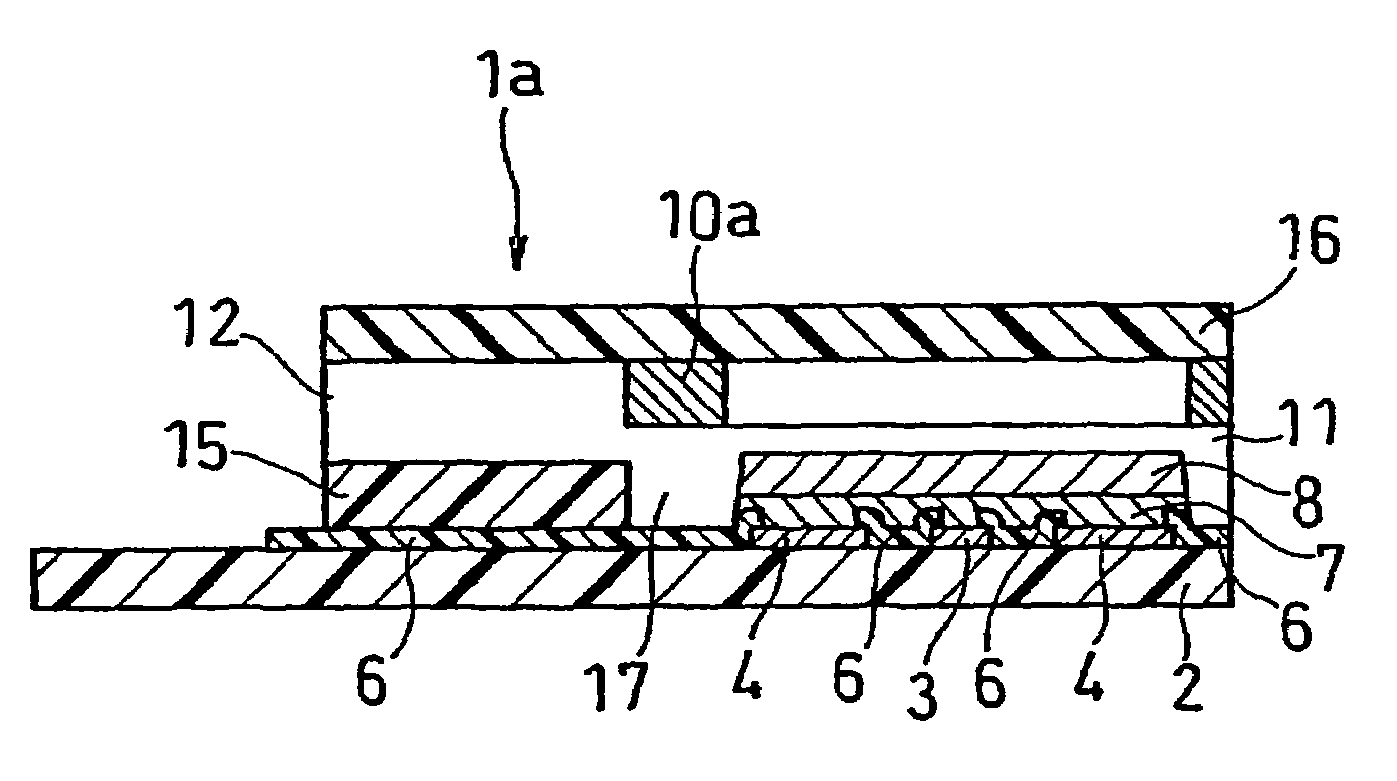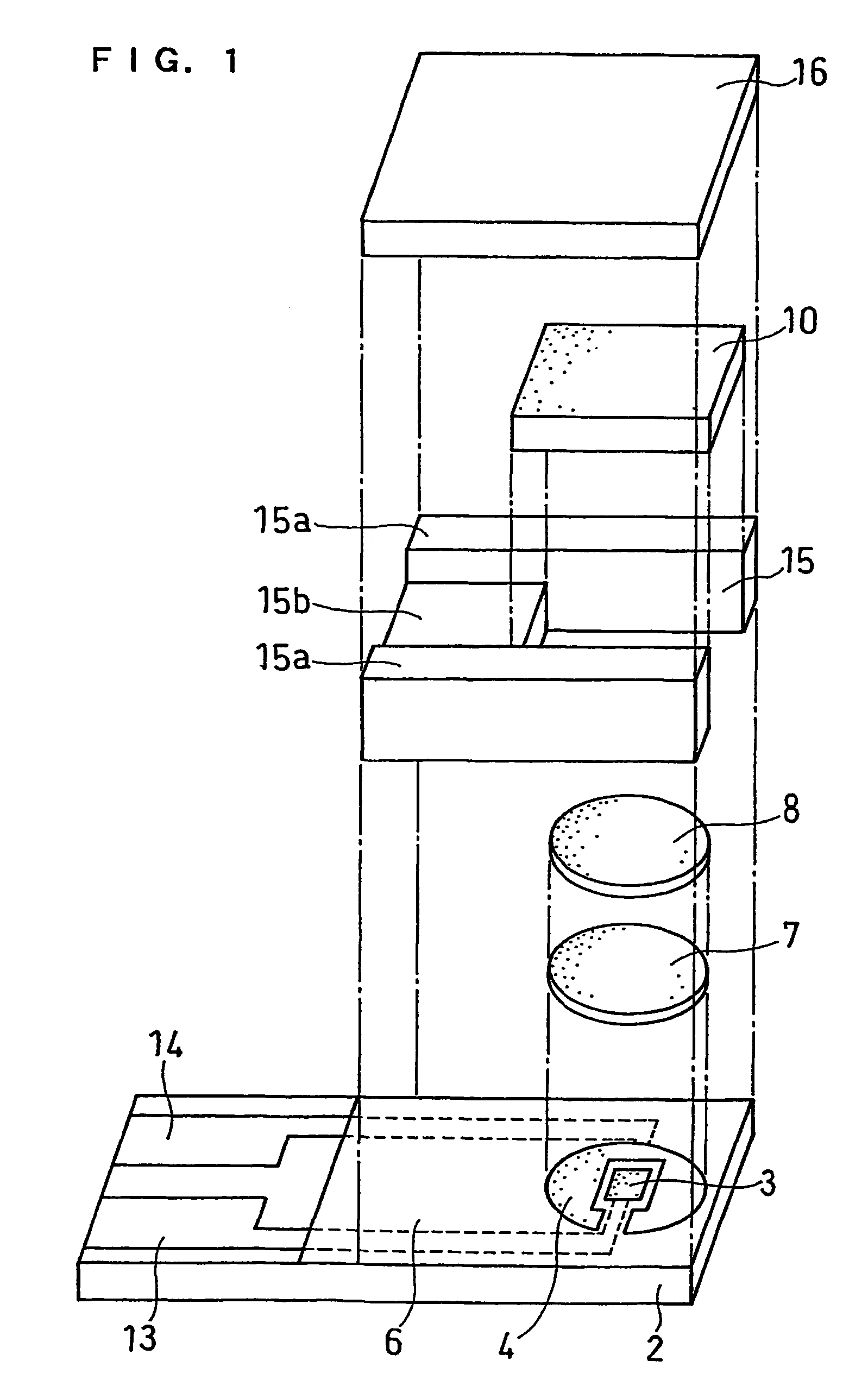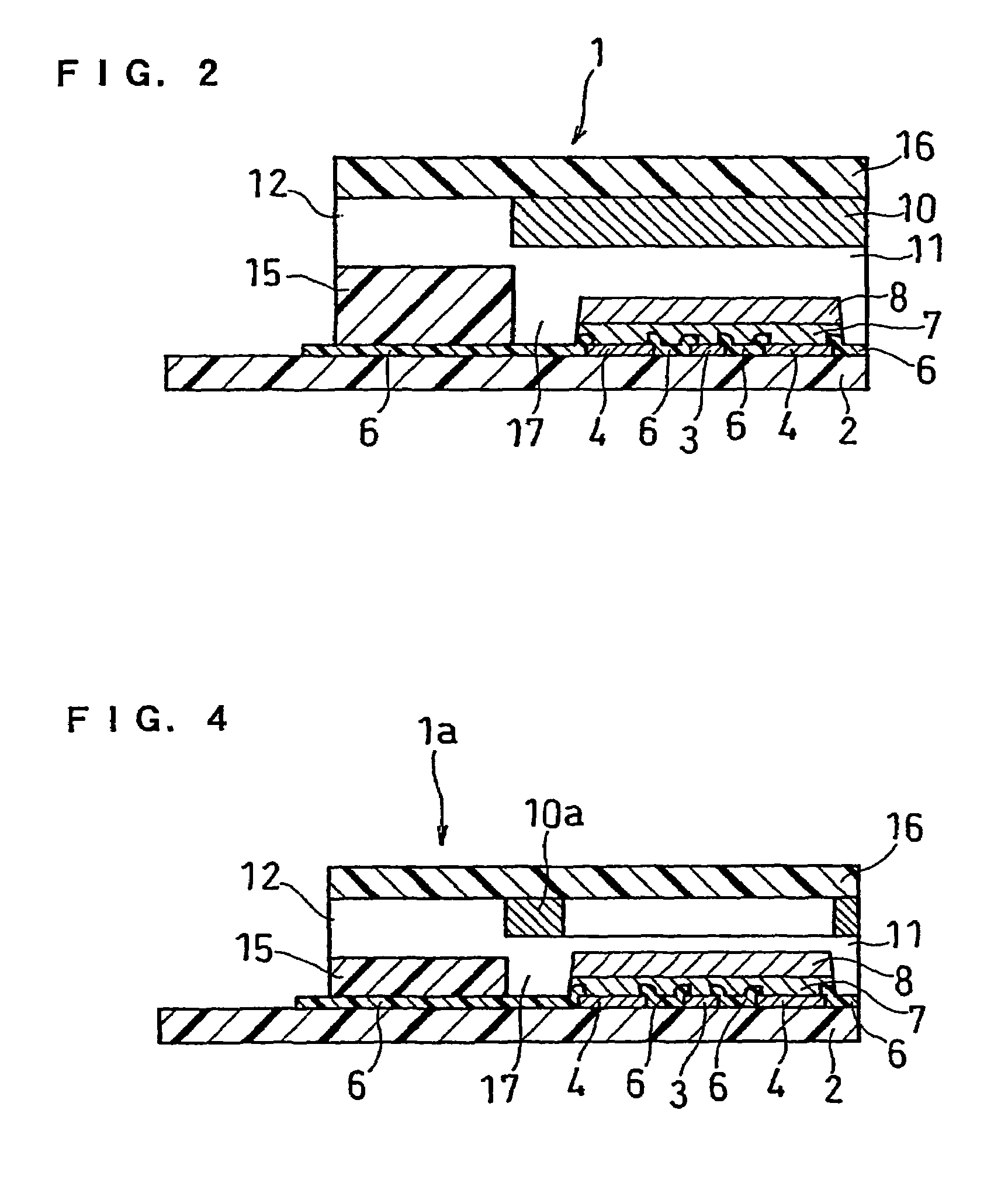Biosensor
a biosensor and sensor technology, applied in the field of biosensors, can solve the problems of low reliability, blank value and response value to a sample solution having the same substrate concentration increase,
- Summary
- Abstract
- Description
- Claims
- Application Information
AI Technical Summary
Benefits of technology
Problems solved by technology
Method used
Image
Examples
embodiment 1
[0042]FIG. 1 is an exploded perspective view of a biosensor of this example, and FIG. 2 is a sectional view of the biosensor.
[0043]A silver paste is printed by screen printing on an insulating base plate 2 and is dried by heating to form a working electrode lead 13 and a counter electrode lead 14 and a base of the electrode system that will be described below. Subsequently, a conductive carbon paste is printed by screen printing and dried by heating to form an electrode system consisting of a working electrode 3 and a counter electrode 4. Further, an insulating paste is printed by screen printing so as to partially cover the electrode system and is dried by heating to form an insulating layer 6. An aqueous solution of carboxymethyl cellulose (hereinafter referred to as CMC), which is a hydrophilic polymer, is dropped over the electrode system consisting of the working electrode 3 and the counter electrode 4, and is then dried by heating to form a CMC layer 7. Thereafter, an aqueous ...
embodiment 2
[0047]FIG. 3 is an exploded perspective view of a biosensor of this example, and FIG. 4 is a sectional view of the biosensor.
[0048]The biosensor of this embodiment is different from that of Embodiment 1 in the formation method of the enzyme layer and the position of the formed enzyme layer. An enzyme layer 10a of this embodiment is formed by screen printing a mixed aqueous solution containing an oxidoreductase, cholesterol esterase and a surfactant on the undersurface of a top cover 16 and drying it. The position of the enzyme layer 10a is set such that when projected onto a base plate 2, the enzyme layer 10a surrounds an electron mediator layer 8 without overlapping with the layer 8.
[0049]In the biosensor of this embodiment, the enzyme layer 10a of the cover member is set such that when projected onto the base plate 2, it surrounds the electron mediator layer 8 without overlapping with the layer 8; therefore, it is possible to reduce the thickness of the sample solution supply path...
embodiment 3
[0051]FIG. 5 is a block diagram showing an example of the structure of a measuring system using the above-described biosensor. A voltage application means 21 applies a voltage between the working electrode 3 and the counter electrode 4 from the leads 13 and 14 of the sensor 1. A current detection means 22 placed between the voltage application means 21 and the lead 14 detects the current flowing between the working electrode 3 and the counter electrode 4. A display means 23 connected to the current detection means 22 displays the current value detected by the current detection means 22 or the value obtained by converting the current into voltage.
[0052]In the following, the present invention will be more specifically described by way of examples. As one example of the biosensor, a cholesterol sensor will be described, but the following examples are not to be construed as limiting in any way the present invention.
PUM
| Property | Measurement | Unit |
|---|---|---|
| concentration | aaaaa | aaaaa |
| height | aaaaa | aaaaa |
| width | aaaaa | aaaaa |
Abstract
Description
Claims
Application Information
 Login to View More
Login to View More - R&D
- Intellectual Property
- Life Sciences
- Materials
- Tech Scout
- Unparalleled Data Quality
- Higher Quality Content
- 60% Fewer Hallucinations
Browse by: Latest US Patents, China's latest patents, Technical Efficacy Thesaurus, Application Domain, Technology Topic, Popular Technical Reports.
© 2025 PatSnap. All rights reserved.Legal|Privacy policy|Modern Slavery Act Transparency Statement|Sitemap|About US| Contact US: help@patsnap.com



